- Army
- Air Defense Systems
- Anti-tank systems and vehicles
- Armored Vehicles
- Armoured personnel carriers
- Artillery Vehicles and Weapons
- Command Post
- Communication Vehicles and Systems
- Electronic Warfare
- Engineer | Maintenance Vehicles
- Infantry Fighting Vehicles
- Main Battle Tanks
- Missiles
- Tactical and Logistic Vehicles
- Radars
- Unmanned Systems
- Weapons
- Navy
- Air
Starstreak MANPADS
Starstreak Missile MANPADS
Man-portable short-range surface-to-air missile system - United Kingdom

Description
The Starstreak is a short-range surface-to-air missile or MAN Portable Air Defense System (MANPADS) designed and manufactured by the Thales subdivision in the United Kingdom. The missile, which travels at more than three times the speed of sound, uses a system of three dart-like projectiles, allowing multiple hits on the target. The Starstreak HVM (High Velocity Missile) can be fired from the shoulder, from a lightweight multiple launcher,s or from the Stormer armored vehicle. The development of the missile began in 1984 when the British Army request a new air defense missile system to supplement the Rapier missile system. The British Ministry of Defense awarded two companies for one year project definition. In June 1986, Starstreak was selected for the system design and development. In October 1995, the UK MoD (Ministry of Defense) accepted the Self-Propelled High-Velocity Missile system (SP HVM), which has the commercial name of Starstreak. The Starstreak missile system has entered into service with the British Army since 1997, the lightweight multiple launchers (LML) and shoulder-launched versions since September 2000. In 2002, the South African Army ordered eight Starstreak lightweight multiple launchers. In the British Army, the Starstreak SP HVM is mounted on a tracked Stormer vehicle. The system has eight rounds of Starstreak missiles ready to fire, with a further 12 missiles carried. SP HVM is fitted with a roof-mounted air defense alerting device (ADAD). The ADAD's infrared scanner and processor provide target detection and prioritization, and the system automatically slews the weapon sight onto the target. On February 10, 2025, Thales and Bharat Dynamics Limited (BDL) announced the official signing of an initial supply contract for laser-guided Man Portable Air Defence systems, the High Velocity (HVM) STARStreak missiles, in response to a significant requirement from the Indian government to enhance India’s air defence capabilities.
Model variants:
- ATASK (Air To Air Starstreak): Fired from a helicopter. This was developed in combination with McDonnell-Douglas and Lockheed-Martin electronics between 1995 and 1998 specifically for use with the AH-64 Apache. It has yet to enter service.
- LML: Fired from a Lightweight Multiple Launcher (LML) that holds three missiles ready for firing and can be used as either a stationary launch unit or mounted on a light vehicle such as a Land Rover or HMMWV. The LML originated in a proposal under the Army Suggestions Scheme for the Javelin system.
- Seastreak: Two versions of a naval mounting have been demonstrated—a one-man mount similar to the LML but carrying a total of six missiles, and a close-in weapon system mounting holding 24 missiles.
- SP HVM (Sel-Propelled High Velocity Missile): Carried on an Alvis Stormer AFV with a roof-mounted eight-round launcher with internal stowage for a further 12 missiles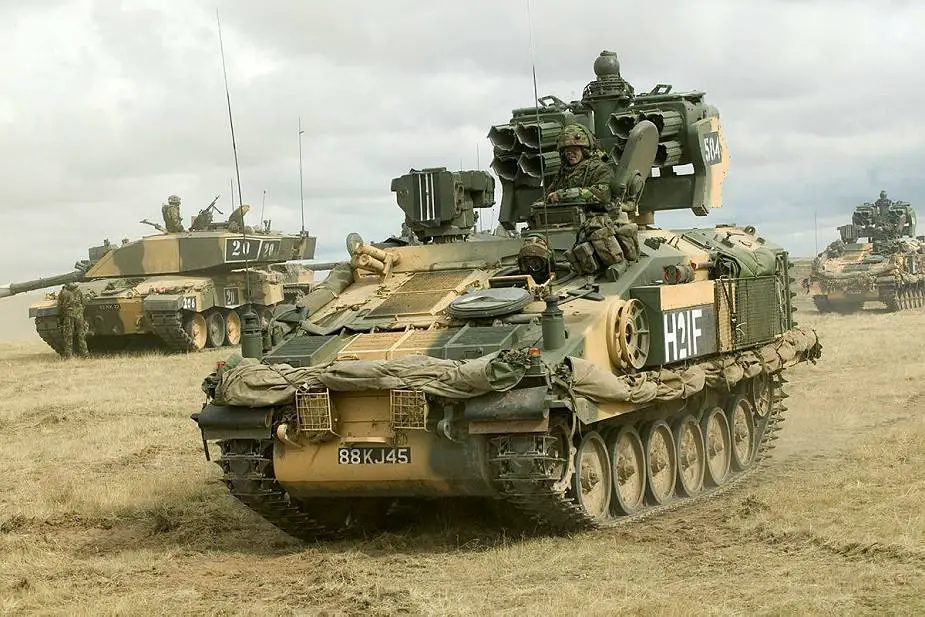
- Starstreak Avenger: Built to a U.S. Army requirement in the early 1990s, this system integrated the Starstreak missile on the Boeing Avenger vehicle, replacing 1 pod of Stinger missiles with 1 pod of 4 Starstreak and modifying the fire control system accordingly.
- Starstreak Mark II: Upgrade to the Starstreak.
- THOR/Multi Mission System (MMS): A four missile turret mounted on a Pinzgauer (6x6) cross-country chassis, unveiled by Thales UK in 2005.
Technical Data
| Launcher Unit |
|
The Starstreak weapon system consists of a Lightweight Multiple Launcher (LML) that can be fitted with up to three missiles to enable multiple targets to be quickly engaged, one after the other. It can be carried on a light-wheeled vehicle such as Land Rover. The aiming unit includes an optical head consisting of a stabilization system, an aiming mark injector, and a monocular sight. The target is acquired and optically tracked using the monocular sight and aiming mark. The multiple launcher employs three canister missiles together with clip-on equipment and a standard aiming unit. Three targets can be engaged in quick succession without the need for reloading.
|
| Missile |
|
The Starstreak missile is transported in a sealed launch tube. This tube is attached to an aiming unit for firing. The missile itself consists of a two-stage, solid-propellant rocket motor assembly. An initial first stage blip motor to eject the weapon from the tube and a second stage boost motor. The rocket motor system accelerates the missile to greater than Mach 3 in a fraction of a second. The missile then releases the three laser-guided hittiles towards the target. The laser beam riding guidance, which enables precision engagement of the smallest of targets, is immune to all known countermeasures. The hittiles in flight cannot be decoyed by even the latest flares or Electronic Countermeasures (ECM). The STARStreak hittiles are designed to defeat both heavily armored and light-skin aerial targets. On penetrating the targets the hittiles will inflict high levels of kinetic energy damage and each hittile also has a fragmenting warhead that detonates inside the target to maximize lethality. The strike is highly precise yet collateral damage is minimized. The latest generation of the Starstreak missile is able to intercept aerial targets at a maximum range of 7 km and an altitude of up to 5 km.
|
 The Starstreak missile is equipped with three "Darts" submunitions, each carrying 450 gr of explosive charge, detonated by a delayed-action, impact activated fuze. |
| Combat Use |
| The STARStreak High Velocity Missile was designed to provide close air defense against conventional air threats such as fixed-wing fighters and late unmasking helicopter targets. The portable shoulder-launched (single missile) Starstreak is assembled and ready to fire in a few seconds. Preparation for firing involves clipping an aiming unit onto the missile canister. |
Specifications
| Type | Type of engaged targets |
| Man-portable surface-to-air defense missile system MANPADS | Fixed-wing fighters and late unmasking helicopter targets. |
| Combat weight | Weight |
| - Tripod: 16 kg - Traverse Head: 19.5 kg - Sighting system: 9 kg - Thermal sight: 6 kg |
- Weight: 16.8 kg - Weight Warhead: 0.9 kg - Warhead type: triple kinetic/HE submunitions - Flight speed: Mach 3 |
| Designer Country | Range and Altitude |
| United Kingdom | Minimum 300 m , maximum 7,000m |
| Country users | Guidance System |
| United Kingdom, South Africa, Thailand, Malaysia, Indonesia | ACLOS Semi-automatic command to line of sight |
| Operator | Time into action |
| 1 | SP - less than 10 seconds to 10 minutes. LML - 2 minutes. Single missile - less than 10 seconds |
Details View
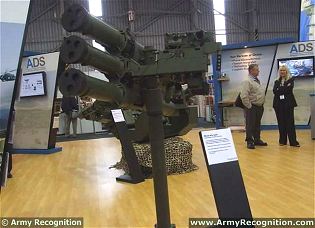 |
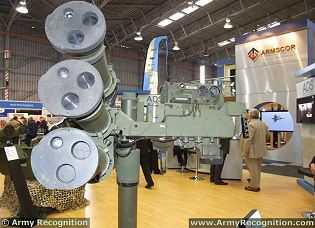 |
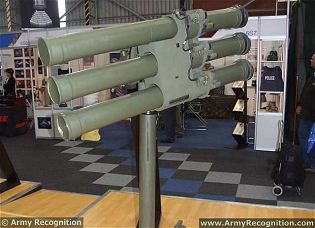 |
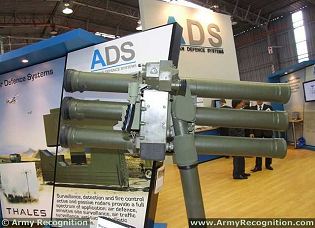 |
Pictures - Video



























